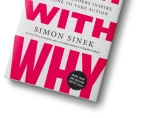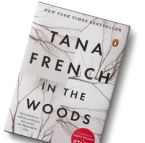
Writing a novel without a plan is like going on a road trip without a map. Sure, you might enjoy the ride—but chances are you’ll get lost, run out of gas, or end up somewhere you never intended. A fiction writing outline gives your story direction. It helps you stay focused, spot problems before they show up in your draft, and write with more confidence.
In this post, you’ll learn how to plan your fiction novel step by step, from that first idea to your final scene. Whether you’re writing your first book or your fifth, these techniques will help you write smarter, not harder.
And when you’re ready to bring your story to life, Estorytellers can support you with writing, formatting, editing, publishing, and marketing. Let’s get started!
Outline Today, Write Tomorrow
Turn your fiction blueprint into a complete manuscript with expert writing support from Estorytellers.
Start Writing with UsWhy Outline Your Novel?
Creating a fiction writing outline isn’t about restricting your creativity; it’s about organizing it. Here’s why it matters:
- Keeps your story focused: You’ll know what happens next, and why.
- Saves time: You spend less time rewriting or getting stuck mid-draft.
- Strengthens pacing and plot: Problems in structure are easier to spot early.
- Helps with publishing prep: Editors and formatters love clean, organized manuscripts.
Even bestselling authors like James Patterson and J.K. Rowling swear by outlines. A clear structure frees you up to focus on storytelling.
Step 1: Start With Your Premise
Every story starts with a what-if. So, your fiction writing outline should too.
Before getting into scenes or character names, define the core of your story with a simple sentence that answers:
- Who is your main character?
- What do they want?
- What stands in their way?
- What’s at stake?
Example: “A shy teenager discovers she’s the heir to a forgotten kingdom—and must choose between a quiet life or reclaiming her power.”
This one-line summary becomes your North Star while writing.
Step 2: Build Character Arcs
Characters drive the plot. Before you outline scenes, get to know your people.
- Protagonist: What do they want vs. what do they need?
- Antagonist: Are they a villain, a system, or even the protagonist’s own fear?
- Supporting cast: Friends, mentors, rivals—how do they influence change?
Decide how each main character evolves from beginning to end. Growth matters as much as plot twists.
Step 3: Pick Your Outlining Style
Writers work differently. Choose the outlining method that fits your brain:
a) Linear Outline
Map out the story in order—from opening to ending. This works well for writers who already know how the story unfolds.
b) Reverse Outline
Start with the ending. What’s the final moment? Then build backward. This is helpful if you have a strong climax in mind.
c) Beat Sheet
Break your story into major “beats” or turning points—like the inciting incident, midpoint, and climax.
d) Mind Map or Sticky Notes
Use visual tools to brainstorm freely. Rearranging scenes visually can spark ideas and reveal gaps.
There’s no right answer. Test a few and use what keeps you moving forward.
Every Outline Deserves Polished Prose
Let our editors refine your draft with developmental and fiction-focused editing services tailored to your genre.
Polish Your ManuscriptStep 4: Choose a Story Structure
Now that you have your premise and characters, pick a structure to guide your outline.
Popular story structures include:
- Three-Act Structure: Beginning, middle, end. Setup, confrontation, resolution. Simple and powerful.
- Hero’s Journey: A call to adventure, trials, transformation, and return. Great for fantasy or adventure.
- Seven-Point Plot: Starts with the end, then builds key milestones to support it.
- Freytag’s Pyramid: Exposition, rising action, climax, falling action, and denouement.
Your outline should show rising tension, character growth, and stakes. A good structure ensures your story has momentum.
Step 5: Break Into Scenes and Chapters
Turn your structure into a list of scenes.
For each scene, jot down:
- What happens?
- Who’s involved?
- What changes by the end?
- What’s the goal and conflict?
Example:
Scene 6 – Rooftop confrontation
Characters: Protagonist vs. rival
Goal: Get information
Conflict: Rival won’t talk unless bribed
Change: Protagonist compromises for the first time
Scenes should move the story forward, not just fill space. If it doesn’t reveal character or change the situation, it might not belong.
Your Story Deserves a Shelf
We help fiction writers publish with global distribution, custom covers, and ISBN setup—without hybrid traps.
Publish Your Fiction with EstorytellersStep 6: Plan Subplots
Subplots add depth. Think romance arcs, friendship betrayals, or hidden family secrets.
Make sure each subplot:
- Supports the main plot emotionally or thematically
- Has its own beginning, middle, and end
- Interacts with the main storyline, not in isolation
Example: While trying to win a magic tournament, your protagonist also struggles with guilt about abandoning a sibling.
These layered arcs keep readers engaged.
Step 7: Add Emotional Arcs
Plot is what happens. Emotion is why readers care.
For every major plot point, ask:
- What is the character feeling?
- What personal transformation is happening?
Tracking emotion helps you connect readers to your characters’ inner journeys—not just external events.
Step 8: Test and Tweak
Once your outline is done:
- Read it out loud. Does the story flow?
- Share it with a writing buddy or mentor.
- Check for logic gaps, pacing issues, or repetition.
Be open to moving scenes, tightening arcs, or rewriting early choices. It’s better to revise the outline than the full draft later.
Don’t Just Outline—Own the Spotlight
Our targeted marketing helps fiction authors grow their readership and amplify their author brand.
Market Your Story With UsOptional: Use Tools and Templates
If you’re a tech-savvy planner, try:
- Digital corkboards or visual map tools
- Outline templates based on story structure
- Software like Scrivener, Milanote, or Google Sheets
Or stick to old-school methods: notebooks, index cards, sticky notes. Use what inspires you.
Estorytellers Can Help Bring Your Outline to Life
Got a strong outline and don’t know how to start writing? Or maybe you’ve written your first draft and now need professional help?
Estorytellers supports you at every stage of fiction writing:
- Book Writing: Need help turning your outline into a full manuscript? We offer ghostwriting and co-writing options.
- Editing Services: Our team can refine your story, fix plot holes, and polish your prose.
- Formatting Services: We’ll format your fiction book for Kindle, print-on-demand, or even comics.
- Publishing Support: From ISBN to cover design, we help you self-publish or approach traditional publishing with confidence.
- Marketing Help: Blurbs, book trailers, Amazon optimization—we’ll help readers find your story.
You don’t have to do it alone. With the right partner, your outline becomes a finished novel—and a finished novel becomes a published book.
Final Thoughts: Start With a Plan, Then Write Boldly
Outlining a novel isn’t about limiting your creativity—it’s about giving it structure. A fiction writing outline can help you stay on track, discover new possibilities, and reach the finish line with fewer rewrites.
Take time to plan, but don’t let outlining become procrastination. Once you know your characters, your plot, and your emotional arcs, it’s time to write.
And if you need help along the way, from the first scene to the book launch, Estorytellers has your back.
Start with an idea. Build your map. Then go write something amazing.
Read More Blogs on Fiction Writing:
These Top Fiction Writing Tips Will Take Your Stories from Good to Great
How To Write Fantasy Fiction 2025
How to Write Dialogue in Fiction A Step‑by‑Step Guide
4 Best Literary Agents in India for Fiction Writers (with Full Author Support)






























